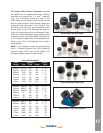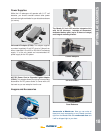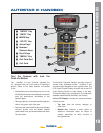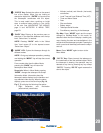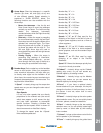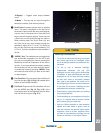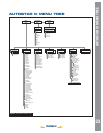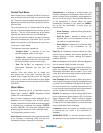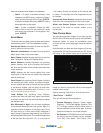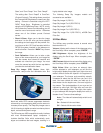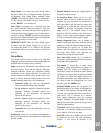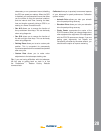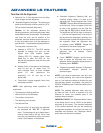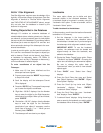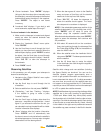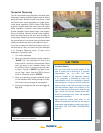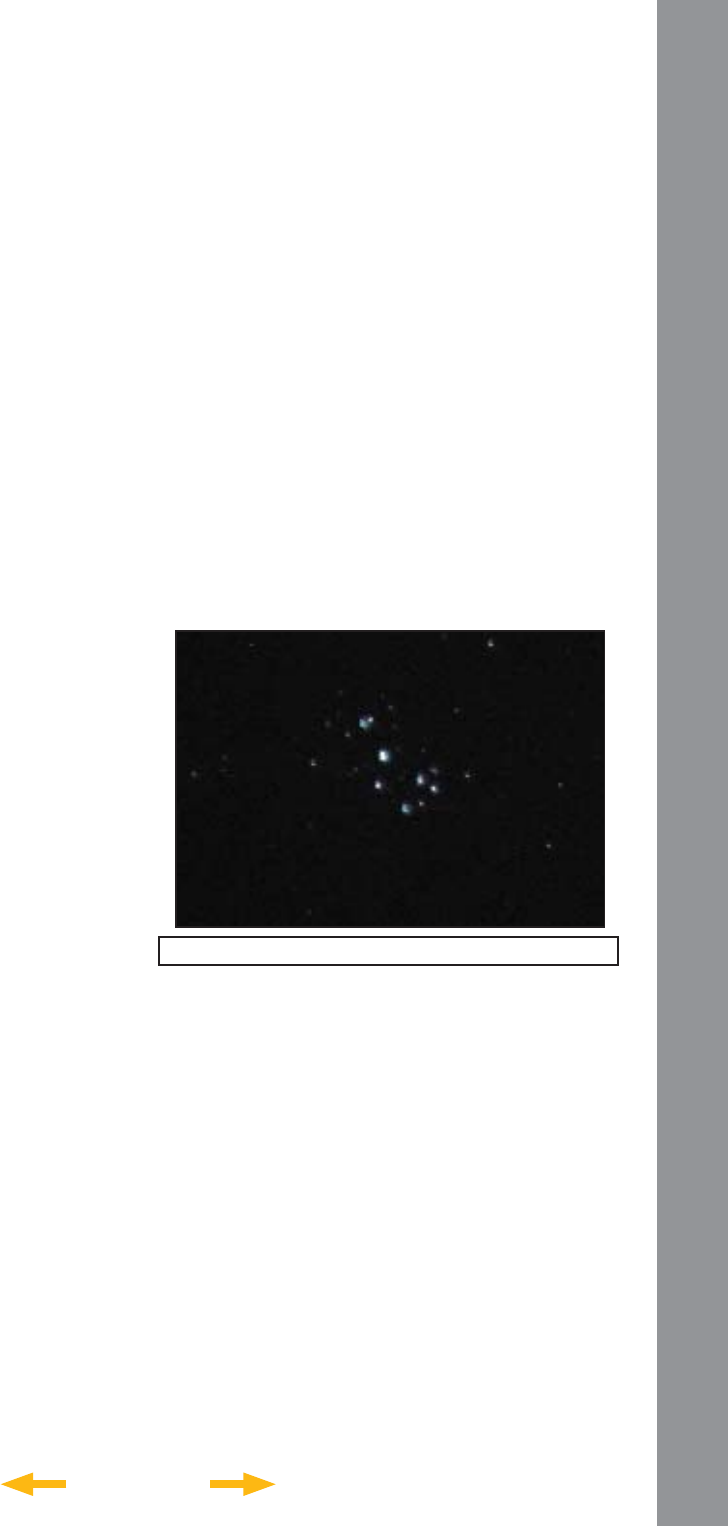
INDEX
when the landmark was added to the database.
• Select – To select a Landmark already in the
database (see ADD below), choose the “Select”
option and scroll through the list. Press “ENTER”
to select a Landmark, then press “GO TO” and the
telescope slews to the object.
• Add – To add a Landmark, choose the “Add”
option. Enter a name for the Landmark. Locate
and center the Landmark in the eyepiece, then
press “ENTER”.
Event Menu
The Event menu provides access to dates and times of
astronomical events. The Event database includes:
Sunrise and Sunset calculates the time that the Sun
rises or sets on the current date.
Moonrise and Moonset calculates the time that the
Moon rises or sets on the current date.
Moon Phases displays the date and time of the next
New, 1st Quarter, Full and 3rd Quarter Moon.
Meteor Showers provides information on upcoming
meteor showers, such as the Perseids, the Leonids,
etc. Also lists the dates of the showers and when they
reach maximum.
NOTE: Meteors are fast moving objects that cover
large areas of the sky and are usually best observed
with the naked eye.
Solar Eclipse lists upcoming Solar Eclipses, including
the date and type (total, annular, or partial) of eclipse,
and the location and time of the fi rst and last contacts
of the Moon’s shadow. Use the Scroll Up and Down
keys to display the available data.
Remember, never
use a telescope to look at the Sun!
Lunar Eclipse lists upcoming Lunar Eclipses,
including the date and type (total, partial, penumbral)
of eclipse. Use the Scroll Up and Down keys to display
the available data.
Min. (Minimum) of Algol is the minimum brightness
of the dramatic eclipsing binary star system, Algol. It is
relatively close at a distance of 100 light years. Every
2.8 days during a 10 hour period, Algol undergoes a
major change in apparent magnitude as one of the two
stars passes behind the other. The combined magnitude
of the two stars thus dips from +2.1 to a minimum of
+3.4 halfway through the eclipse as the second star
is hidden. LS calculates minimum magnitude time at
mid-eclipse.
Autumn and Vernal Equinox calculates the time and
date of the fall or spring equinox of the current year.
Winter and Summer Solstice calculates the time
and date of the winter or summer solstice of the
current year.
Take Picture Menu
You can take wide-fi eld images of the night sky with
the ECLIPS CCD Module that is part of the LightSwitch
alignment system. It’s great for constellation shots
and you can see some large bright deep sky objects
as well.
Note that while you take and store images on to a user
supplied Mini SD Card for download to your PC, to fully
use many of the options below and to preview your
image you need to connect the LS to a user supplied
external video monitor.
Start by selecting “Take Picture” from the top menu:
“Take Picture” > “ENTER”
Then you will see the following options:
• Preview Exposure: Displays “Finder Image;
Exposing...”. UP/DOWN adjusts Exposure Time
(ET). A longer exposure records fainter stars. A
shorter exposure records fainter stars. A shorter
exposure is better for very bright subjects.
• Set Contrast: UP/DOWN selects scrolls through
the thirteen pre-set Contrast curves available,
“Cont. Day”, “Cont. Moon”, “Cont. Planet”, “Cont.
AUTOSTAR III MENU OPTIONS
25
The Pleiades Star Cluster (M45 )



